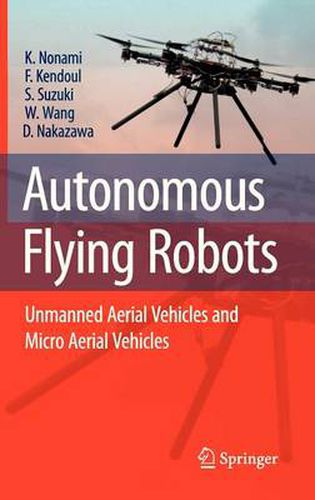Readings Newsletter
Become a Readings Member to make your shopping experience even easier.
Sign in or sign up for free!
You’re not far away from qualifying for FREE standard shipping within Australia
You’ve qualified for FREE standard shipping within Australia
The cart is loading…






This title is printed to order. This book may have been self-published. If so, we cannot guarantee the quality of the content. In the main most books will have gone through the editing process however some may not. We therefore suggest that you be aware of this before ordering this book. If in doubt check either the author or publisher’s details as we are unable to accept any returns unless they are faulty. Please contact us if you have any questions.
The advance in robotics has boosted the application of autonomous vehicles to perform tedious and risky tasks or to be cost-effective substitutes for their - man counterparts. Based on their working environment, a rough classi cation of the autonomous vehicles would include unmanned aerial vehicles (UAVs), - manned ground vehicles (UGVs), autonomous underwater vehicles (AUVs), and autonomous surface vehicles (ASVs). UAVs, UGVs, AUVs, and ASVs are called UVs (unmanned vehicles) nowadays. In recent decades, the development of - manned autonomous vehicles have been of great interest, and different kinds of autonomous vehicles have been studied and developed all over the world. In part- ular, UAVs have many applications in emergency situations; humans often cannot come close to a dangerous natural disaster such as an earthquake, a ood, an active volcano, or a nuclear disaster. Since the development of the rst UAVs, research efforts have been focused on military applications. Recently, however, demand has arisen for UAVs such as aero-robotsand ying robotsthat can be used in emergency situations and in industrial applications. Among the wide variety of UAVs that have been developed, small-scale HUAVs (helicopter-based UAVs) have the ability to take off and land vertically as well as the ability to cruise in ight, but their most importantcapability is hovering. Hoveringat a point enables us to make more eff- tive observations of a target. Furthermore, small-scale HUAVs offer the advantages of low cost and easy operation.
$9.00 standard shipping within Australia
FREE standard shipping within Australia for orders over $100.00
Express & International shipping calculated at checkout
This title is printed to order. This book may have been self-published. If so, we cannot guarantee the quality of the content. In the main most books will have gone through the editing process however some may not. We therefore suggest that you be aware of this before ordering this book. If in doubt check either the author or publisher’s details as we are unable to accept any returns unless they are faulty. Please contact us if you have any questions.
The advance in robotics has boosted the application of autonomous vehicles to perform tedious and risky tasks or to be cost-effective substitutes for their - man counterparts. Based on their working environment, a rough classi cation of the autonomous vehicles would include unmanned aerial vehicles (UAVs), - manned ground vehicles (UGVs), autonomous underwater vehicles (AUVs), and autonomous surface vehicles (ASVs). UAVs, UGVs, AUVs, and ASVs are called UVs (unmanned vehicles) nowadays. In recent decades, the development of - manned autonomous vehicles have been of great interest, and different kinds of autonomous vehicles have been studied and developed all over the world. In part- ular, UAVs have many applications in emergency situations; humans often cannot come close to a dangerous natural disaster such as an earthquake, a ood, an active volcano, or a nuclear disaster. Since the development of the rst UAVs, research efforts have been focused on military applications. Recently, however, demand has arisen for UAVs such as aero-robotsand ying robotsthat can be used in emergency situations and in industrial applications. Among the wide variety of UAVs that have been developed, small-scale HUAVs (helicopter-based UAVs) have the ability to take off and land vertically as well as the ability to cruise in ight, but their most importantcapability is hovering. Hoveringat a point enables us to make more eff- tive observations of a target. Furthermore, small-scale HUAVs offer the advantages of low cost and easy operation.